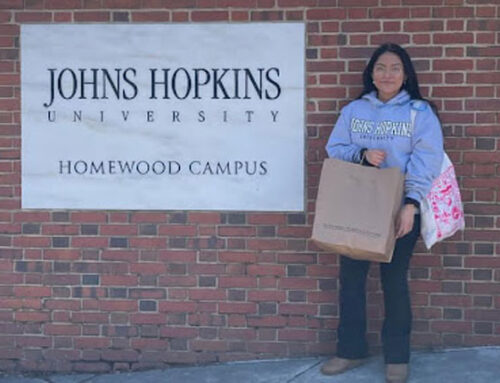Based on a new report, the San Joaquin Valley’s nursing shortage is rapidly reaching crisis proportions and the outlook for the future may be even more devastating with an increasing gap between the supply of nurses and the demand for health care.
The report, “Crisis in Care: The Nursing Shortage in the San Joaquin Valley 2007,” was released today (May 9) by the newly established Central California Center for Excellence in Nursing at California State University, Fresno.
The study was led by Dr. Mary Barakzai, director of the center, and Dr. Kathleen Curtis, associate dean of the College of Health and Human Services and director of the Central California Center for Health and Human Services at Fresno State.
Understanding the Valley’s nursing crisis
Nursing shortages are not new and have been experienced for the past several decades. The present shortage is more severe than the previous shortages due to an increase in the aging population and the prevalence of chronic diseases.
Factors such as budget constraints and aging faculty also contribute to our region’s nursing shortage crisis
One of the key findings of the report is the need for additional specialty nurses and nurse educators who practice at the master’s and doctoral levels. With an aging nursing workforce, new nurses struggle to meet the growing health care needs of our aging population. In addition, an increasing number of qualified students cannot enroll because there are not enough nurse educators to help prepare them for the workforce.
Some facts:
In the San Joaquin Valley, nine nursing education programs provide an additional 800 new nursing graduates each year.
However, only one in two qualified students is admitted to nursing education programs due to lack of capacity.
Among those who are enrolled, only four out of five finish the program and graduate. Of those, only 70 percent pass the state licensure exam on their first attempt.
For every 100 students who are qualified and want to enter the nursing field, only 24 students actually reach clinical practice as registered nurses in a timely manner.
The gap between demand and supply is expected to continue to grow in the next 13 years, reaching a shortage of between 10,000 to 20,000 nurses in the San Joaquin Valley by 2020. The region’s nursing shortage will have immediate and far-reaching effects, including a decrease in the quality of nursing care, delays in medication administration and procedures, diversion of patients from emergency departments, delayed surgeries and closed beds.
From crisis to solution
“Crisis in Care” makes several recommendations, including actions that address increasing the capacity of educational programs, reducing barriers to students and nurse retention as well as attrition.
Insufficient numbers of faculty limit the capacity of our educational programs to expand. Of the approximately 300 nursing faculty in the Valley’s nine nursing education programs, only half hold full-time faculty positions. Only one in 10 nursing faculty holds a doctoral degree, the required qualification to teach in a baccalaureate or master’s degree program. Five in 10 are prepared at the master’s degree level. The remaining four hold bachelor’s or associate degrees. The average age of nursing faculty in California is nearly 50, and 1-2 percent retire each year. We need to invest in a new generation of faculty to replace those retiring.
Strategies that encourage nurses to assume faculty roles include: educational stipends, providing salaries that are comparable to those who practice in the clinical sector and making educational opportunities more accessible (i.e. distance learning). The mentoring of new graduates, residency programs, the incorporation of new technology and adequate support staff are all practices that can increase job satisfaction and retention for current practicing nurses.
Short-term solutions and stop-gap measures have been used frequently in the past and have been ineffective in resolving our nursing shortage. It is critical that academic programs, decision-makers, hospitals and other health care entities join together to develop comprehensive long-term strategies on several fronts to address the regional nursing shortage crisis, the report concludes.
An emerging center addresses complex issues
On Tuesday, California State University, Fresno President John D. Welty formally announced the opening of the Central California Center for Excellence in Nursing during an open house.
The new center represents a prime example of the university’s commitment to addressing complex health issues of the San Joaquin Valley. Its mission is to utilize research, policy, promotion of advanced nursing education and practice, and collaboration with regional nursing leadership and interests to accomplish its goals. Fresno State’s engagement with the regional community has been advanced by other health-related university units such as the Central Valley Health Policy Institute.
The center is undertaking an ambitious agenda to enhance nursing education and practice at both undergraduate and graduate levels and will be at the forefront of provide long-term solutions and support for the region’s efforts to address the growing shortage of nurses, said Dr. Mary Barakzai, director of the Central California Center for Excellence.
The center will engage leaders from throughout the region to explore opportunities that improve the health care delivery system, enhance access to health careers and increase qualified nursing faculty for Central California.
Under the leadership of Dr. Benjamin Cuellar, dean of the College of Health and Human Services, and Barakzai, the center will connect the community to the joint academic and service mission of the university and college.
A legacy to be remembered
The Central California Center for Excellence in Nursing also has unveiled the inaugural exhibit of a special historical project, “Legacy of Nursing Education and Leadership at California State University, Fresno.”
In 2008, the Department of Nursing will celebrate its 50th anniversary. As a prelude to the silver anniversary, a distinguished group of emeriti faculty and alumni have collaborated with the new center to undertake this project, which documents and preserves the legacy of nursing education and leadership at Fresno State.
For more information regarding the report or the center, please visit the following Web site: Central California Center for Excellence in Nursing
View the 72pg PDF Report (25mb)


